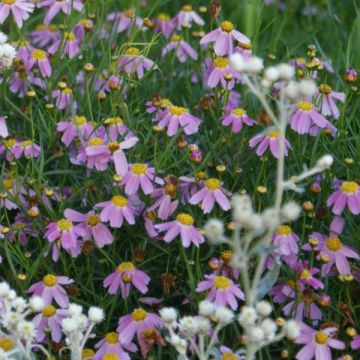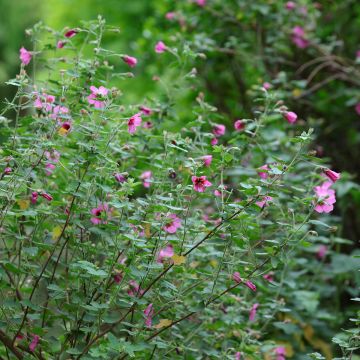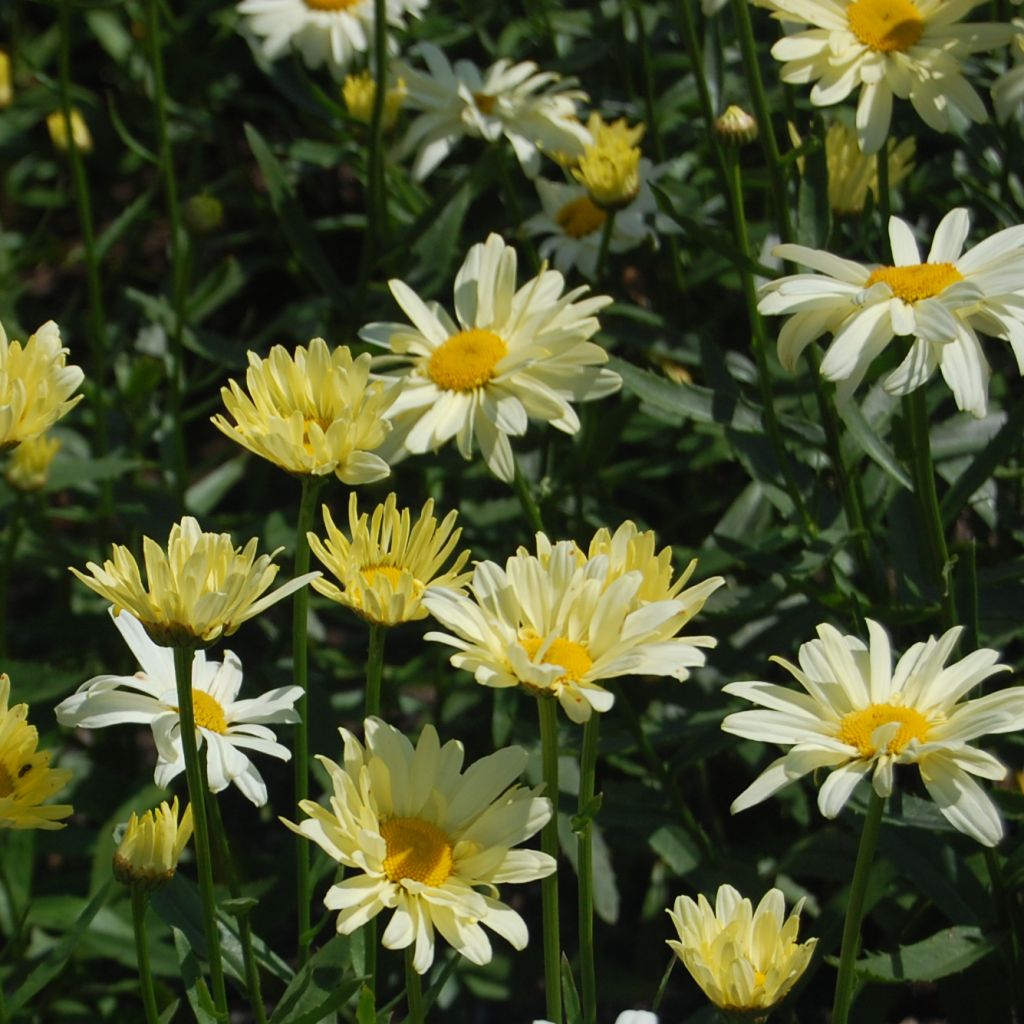

Leucanthemum superbum Sonnenschein - Shasta Daisy
Leucanthemum superbum Sonnenschein - Shasta Daisy
Leucanthemum x superbum Sonnenschein
Shasta Daisy
First order on Promesse de fleurs, on a Monday at 11:00 am, arrived on Wednesday at 10:30 am. Young plants well-rooted and vigorous in their pots. Perennials ordered at the beginning of October (this might explain it... no opinion on spring young plants). Out of a total of 24 plants ordered, no "weak" plants like on most other online selling sites. Very well packaged, no risk with unreliable carriers. It promises a beautiful flowerbed for next summer.
Olivier B., 16/10/2019
Why not try an alternative variety in stock?
View all →This plant carries a 12 months recovery warranty
More information
We guarantee the quality of our plants for a full growing cycle, and will replace at our expense any plant that fails to recover under normal climatic and planting conditions.
From €5.90 for pickup delivery and €6.90 for home delivery
Express home delivery from €8.90.

Does this plant fit my garden?
Set up your Plantfit profile →
Description
Leucanthemum superbum Sonnenschein is a variety of Daisy that bears, on sturdy stems, adorned with charming flowers with lemon yellow petals turning creamy over time. It is a very bright Daisy that stands out from the ordinary, and it is equally superb in borders or bouquets.
Leucanthemum superbum Sonnenschein is a horticultural hybrid obtained from Leucanthemum x superbum and belongs to the Asteraceae family. Its uniqueness lies in its colour: its flowers are composed of lemon yellow petals arranged around a golden yellow centre. This colour can be more or less intense and can turn creamy more or less quickly depending on the position. To preserve its colours for as long as possible, it is advisable to protect it from excessive sun.
Beautiful in summer, this perennial completely disappears in winter. The flowering takes place from June to September, in the form of large solitary heads measuring 5 to 7 cm (2 to 3in) in diameter. Its leaves are dark green, single and alternate with regularly dentate edges.
It is a disease-resistant and easy-to-grow plant, which you can place in non-burning sun or partial shade. It is undemanding in terms of soil and can adapt to any soil as long as it is well-drained.
Leucanthemum x superbum Sonnenschein forms a beautiful clump, slightly wider than tall, reaching approximately 80 cm (32in) in height and 60 cm (24in) in width. It is a hardy perennial, to -15°C (5°F), with moderately fast growth, reaching its full maturity in five years.
In the garden, this summer daisy will be perfect in borders as its flowers last a long time. Combine it with beautiful daffodils, Lady's Mantle, and for a striking contrast, with purple perennials like Knautia macedonica Thunder and Lightning, Allium sphaerocephalon, or Garnet Yarrow.
Report an error about the product description
Leucanthemum superbum Sonnenschein - Shasta Daisy in pictures
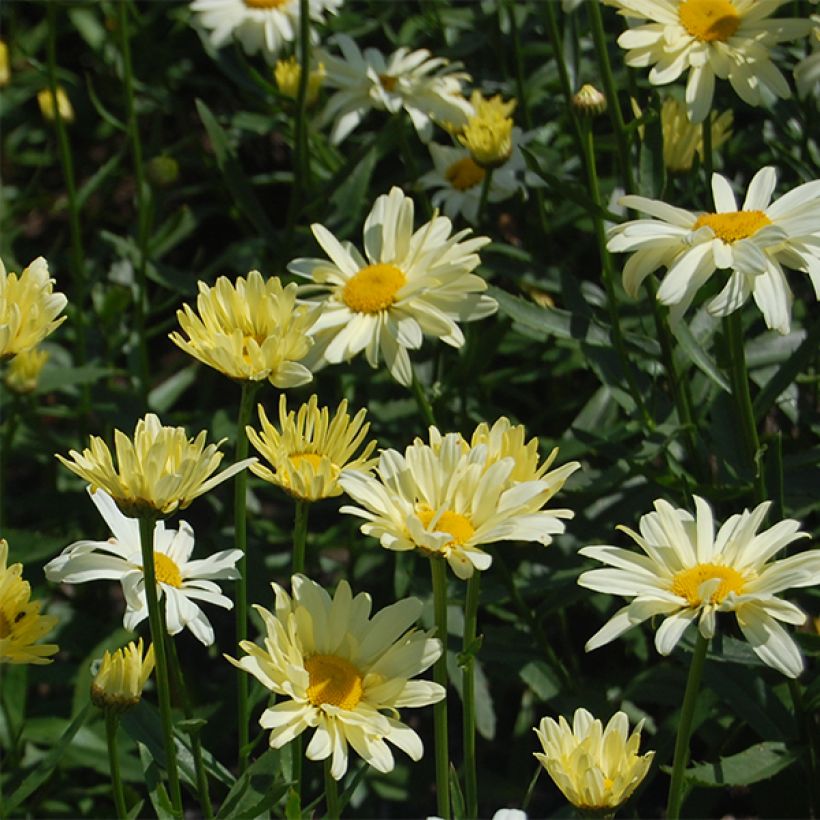

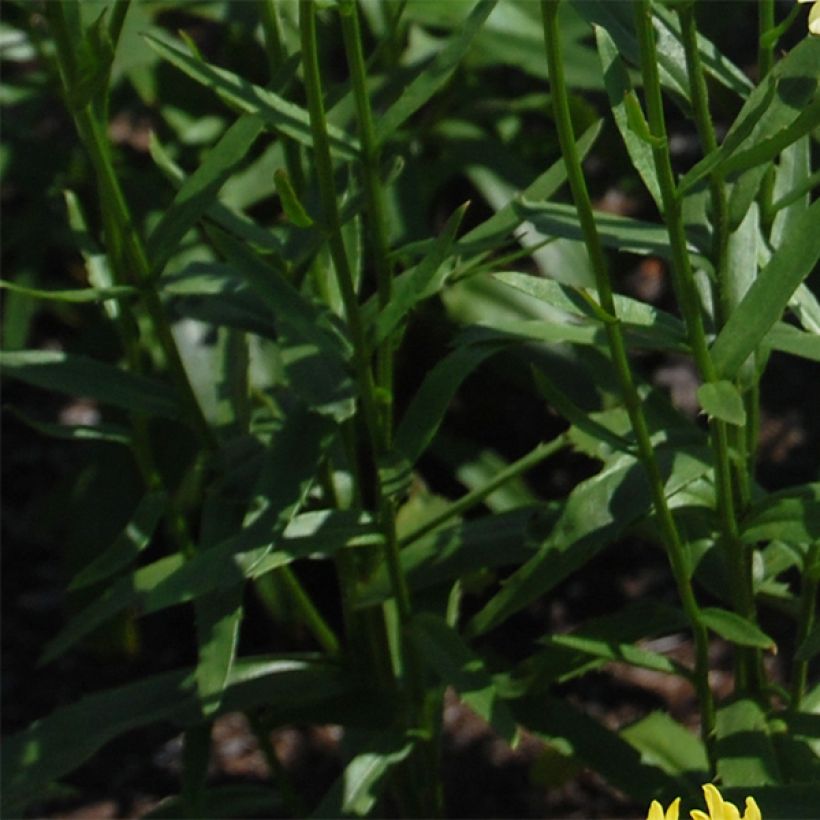

Flowering
Foliage
Plant habit
Botanical data
Leucanthemum
x superbum
Sonnenschein
Asteraceae
Shasta Daisy
Cultivar or hybrid
Other Leucanthemum - Marguerite
Planting and care
Plant your Leucanthemum in deep, loose, moist, or occasionally dry soil, that is not too rich, but well-drained. This plant tolerates limestone perfectly. It thrives in a sunny, or at the most semi-shaded, position. It can withstand temperatures as low as -20°C (-4°F). Regularly remove faded flowers and remove dead foliage in spring. This daisy can be attacked by aphids, snails and may have foliar spots.
Planting period
Intended location
Care
-
, onOrder confirmed
Reply from on Promesse de fleurs
Summer flowering perennials
Haven't found what you were looking for?
Hardiness is the lowest winter temperature a plant can endure without suffering serious damage or even dying. However, hardiness is affected by location (a sheltered area, such as a patio), protection (winter cover) and soil type (hardiness is improved by well-drained soil).

Photo Sharing Terms & Conditions
In order to encourage gardeners to interact and share their experiences, Promesse de fleurs offers various media enabling content to be uploaded onto its Site - in particular via the ‘Photo sharing’ module.
The User agrees to refrain from:
- Posting any content that is illegal, prejudicial, insulting, racist, inciteful to hatred, revisionist, contrary to public decency, that infringes on privacy or on the privacy rights of third parties, in particular the publicity rights of persons and goods, intellectual property rights, or the right to privacy.
- Submitting content on behalf of a third party;
- Impersonate the identity of a third party and/or publish any personal information about a third party;
In general, the User undertakes to refrain from any unethical behaviour.
All Content (in particular text, comments, files, images, photos, videos, creative works, etc.), which may be subject to property or intellectual property rights, image or other private rights, shall remain the property of the User, subject to the limited rights granted by the terms of the licence granted by Promesse de fleurs as stated below. Users are at liberty to publish or not to publish such Content on the Site, notably via the ‘Photo Sharing’ facility, and accept that this Content shall be made public and freely accessible, notably on the Internet.
Users further acknowledge, undertake to have ,and guarantee that they hold all necessary rights and permissions to publish such material on the Site, in particular with regard to the legislation in force pertaining to any privacy, property, intellectual property, image, or contractual rights, or rights of any other nature. By publishing such Content on the Site, Users acknowledge accepting full liability as publishers of the Content within the meaning of the law, and grant Promesse de fleurs, free of charge, an inclusive, worldwide licence for the said Content for the entire duration of its publication, including all reproduction, representation, up/downloading, displaying, performing, transmission, and storage rights.
Users also grant permission for their name to be linked to the Content and accept that this link may not always be made available.
By engaging in posting material, Users consent to their Content becoming automatically accessible on the Internet, in particular on other sites and/or blogs and/or web pages of the Promesse de fleurs site, including in particular social pages and the Promesse de fleurs catalogue.
Users may secure the removal of entrusted content free of charge by issuing a simple request via our contact form.
The flowering period indicated on our website applies to countries and regions located in USDA zone 8 (France, the United Kingdom, Ireland, the Netherlands, etc.)
It will vary according to where you live:
- In zones 9 to 10 (Italy, Spain, Greece, etc.), flowering will occur about 2 to 4 weeks earlier.
- In zones 6 to 7 (Germany, Poland, Slovenia, and lower mountainous regions), flowering will be delayed by 2 to 3 weeks.
- In zone 5 (Central Europe, Scandinavia), blooming will be delayed by 3 to 5 weeks.
In temperate climates, pruning of spring-flowering shrubs (forsythia, spireas, etc.) should be done just after flowering.
Pruning of summer-flowering shrubs (Indian Lilac, Perovskia, etc.) can be done in winter or spring.
In cold regions as well as with frost-sensitive plants, avoid pruning too early when severe frosts may still occur.
The planting period indicated on our website applies to countries and regions located in USDA zone 8 (France, United Kingdom, Ireland, Netherlands).
It will vary according to where you live:
- In Mediterranean zones (Marseille, Madrid, Milan, etc.), autumn and winter are the best planting periods.
- In continental zones (Strasbourg, Munich, Vienna, etc.), delay planting by 2 to 3 weeks in spring and bring it forward by 2 to 4 weeks in autumn.
- In mountainous regions (the Alps, Pyrenees, Carpathians, etc.), it is best to plant in late spring (May-June) or late summer (August-September).
The harvesting period indicated on our website applies to countries and regions in USDA zone 8 (France, England, Ireland, the Netherlands).
In colder areas (Scandinavia, Poland, Austria...) fruit and vegetable harvests are likely to be delayed by 3-4 weeks.
In warmer areas (Italy, Spain, Greece, etc.), harvesting will probably take place earlier, depending on weather conditions.
The sowing periods indicated on our website apply to countries and regions within USDA Zone 8 (France, UK, Ireland, Netherlands).
In colder areas (Scandinavia, Poland, Austria...), delay any outdoor sowing by 3-4 weeks, or sow under glass.
In warmer climes (Italy, Spain, Greece, etc.), bring outdoor sowing forward by a few weeks.






















































